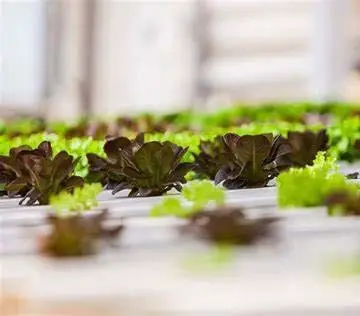Since hydroponic indoor gardening has been around for years, many home gardeners are turning to them to have year-round access to homegrown vegetables. Growth rate and yields exceed traditional gardening, including organic gardening, with the right balance of light and other conditions. If you consider building hydroponic gardens, you might wonder what kind of hydroponic tools you will need and how much equipment will cost.
How Do You Get Started with Hydroponics?
Light, food, a growing medium, and water are all essential to plant growth. To get all four of the four key elements, you will need some basic hydroponic equipment:
 Light
Light
Natural light from the sun includes both visible and infrared wavelengths. Not only does it provide a light source for hydroponics efficiently, but it is also the cheapest option. To grow, leafy greens need at least six hours of sunlight per day. Windows could provide these amounts of light with a southern orientation or greenhouses.
Alternatively, grow you can use lights. Warm (red) and cool (blue) can come from bulbs with an output between 4,000 and 6,000 Kelvin. Hydroponic tools and equipment need to be utilized when using artificial light. Examples include light fixtures, structural supports for lighting, power strips, and outlets with easy access. When choosing a hydroponic grow light, consideration should be given to cost, light intensity, light spectrum, and coverage area.
Growing Medium
Unlike soil growing, hydroponic growing requires an inert medium for support. Substrates provide hydroponic plants with water, air, and nutrients they need for growth. Several of the most common substrates are natural materials such as coconut coir (coconut fiber), peat moss, sand, sawdust, perlite, clay balls and vermiculite. You can use natural products or manufactured ones such as Rockwool or expanded clay pebbles. Due to its incredible ability to retain water, Rockwool ensures that the root systems are adequately hydrated.
Water
The most preferred water for hydroponic systems is reverse osmosis (RO). In this process, water is purified to a purity of 98-99%. Plant nutrients will be easier to keep in balance when water is purer. Monitoring water pH will also require further hydroponic tools. It is possible for tap water to contain unwanted minerals or to have an undesirable pH level.
Hydroponic gardeners also need a pH testing kit to keep an eye on their pH levels and add pH-Up or pH-Down to the water reservoir as necessary.
Nutrients
“Plant food” is what you must include in your water if you’re growing plants without soil. The plant roots grow directly in nutrient-rich water in this system. Under the growing chamber, nutrient-filled water is positioned in a container. Healthy plants require numerous micronutrients and macronutrients. Among them are:
- Boron
- Calcium
- Copper
- Iron
- Magnesium
- Manganese
- Molybdate
- Nitrogen
- Phosphorus
- Potassium
- Sulfur
- Zinc
Many hydroponic gardeners prefer to purchase a premixed nutrient solution containing these hydroponic nutrients in the correct proportions. There is a high likelihood that fertilizer designed for traditional gardening will be deficient in the nutrients listed above.
An additional piece of equipment for hydroponic gardening is an instrument that measures the strength of the hydroponic solution, called a total dissolved solids (TDS) meter. With high TDS, it is also more difficult to measure nutrient levels.
Types of Hydroponic Methods
To hold everything together, hydroponic gardeners also need a basic system. Water and nutrients are the primary differences between the six types of hydroponic farming. Different types of plants work better with different types of systems. Simple passive hydroponics does not use a water pump, and some use capillary action instead of air pumps to deliver nutrients. In contrast, active systems involve the movement of nutrient solution through electric pumps and water oxygenation through air stones.
The excess water drained from the grow bed is recirculated in a recovery system, more popular with smaller, at-home growers.
With an air pump and air stone, the most common way growers oxygenate the nutrient solution reservoir is by pumping bubbles into it. Kits and pre-assembled systems are available for purchase. You will need a nutrient reservoir, net pots, and these additional hydroponic tools and equipment if you build a DIY hydroponic system.
Why Hydroponics?
Growing plants hydroponically has numerous benefits, including faster growth and greater yields. Additionally, your hydroponic indoor garden system will have a greater production capacity with limited resources. Even though hydroponic farming is unlikely to replace conventional farming, it fundamentally reshapes the way we produce food. A new generation of modern farmers may be building indoor farms that produce fresh produce to feed their families throughout the year.

